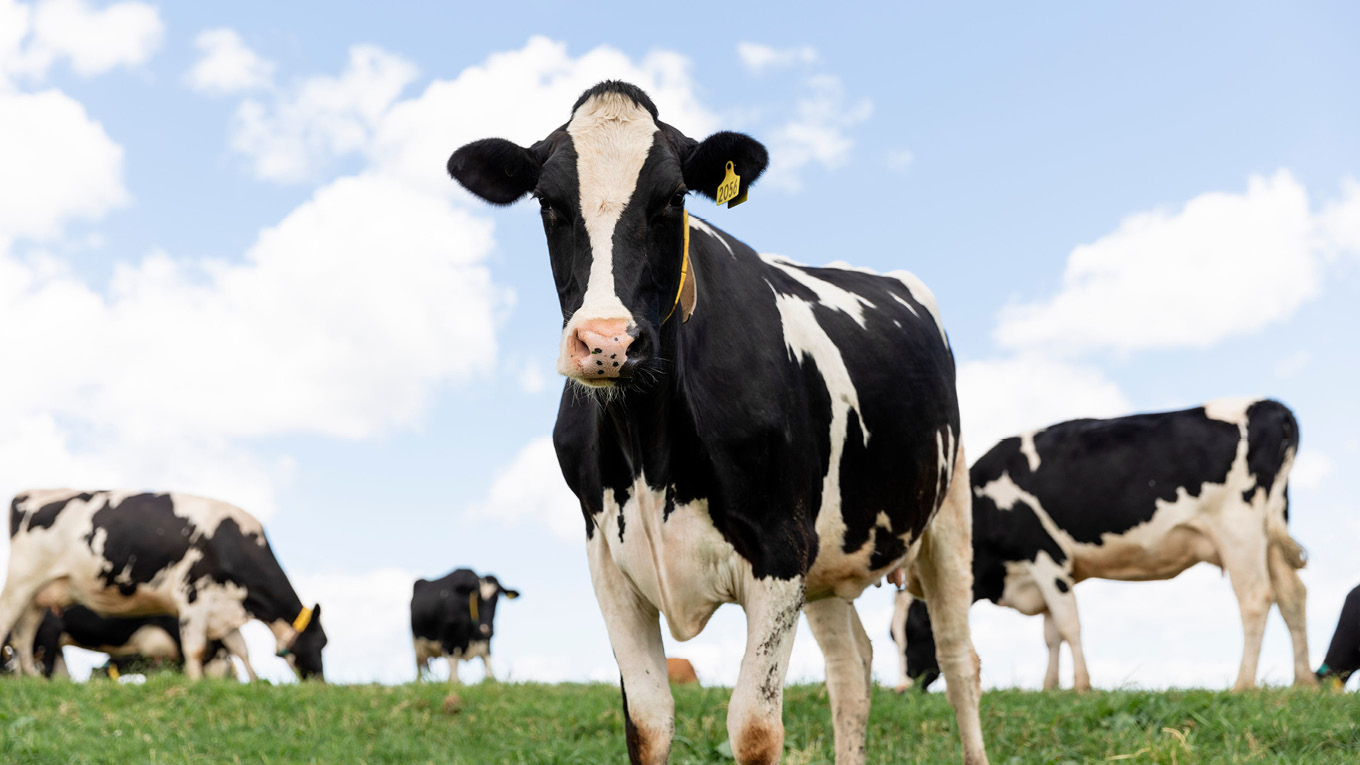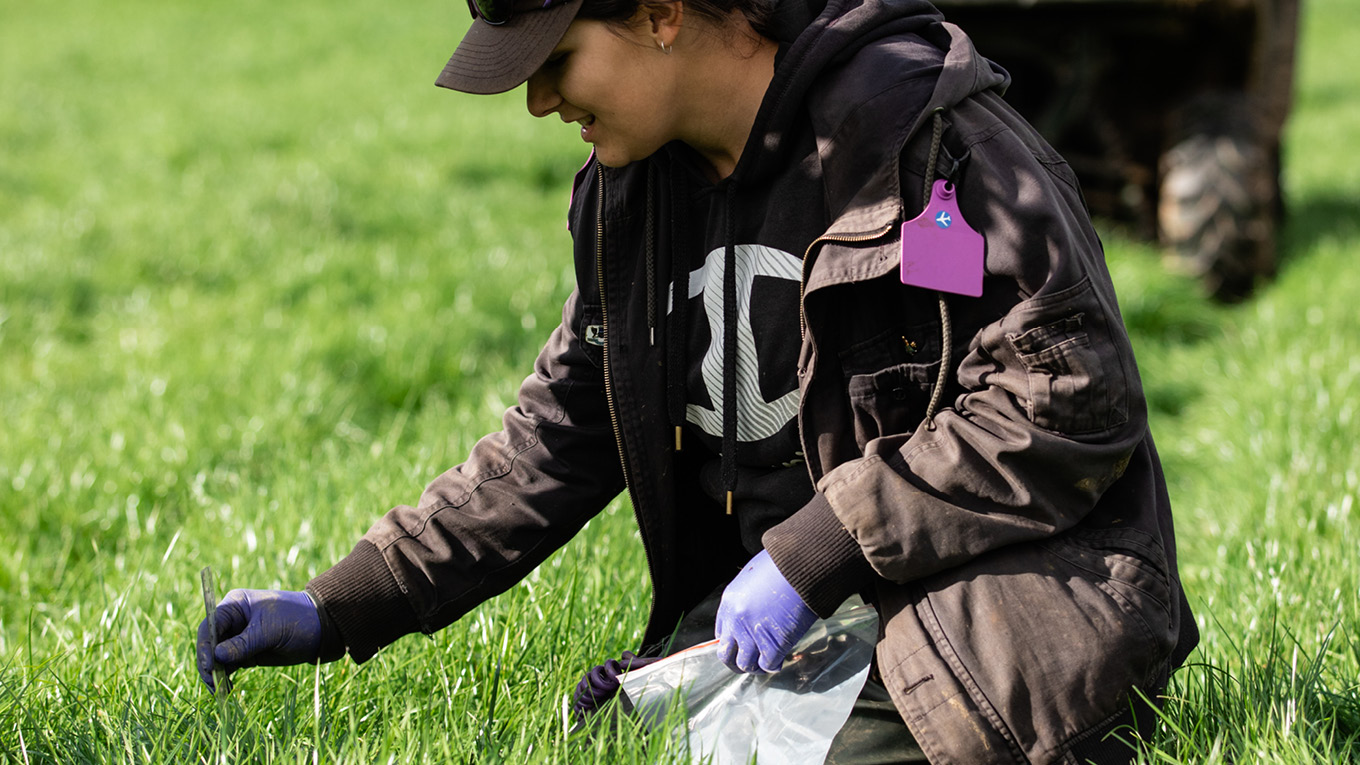Alternative Forages for Mixed Ration Systems
One particular focus of the C4Milk project is the investigation of forage management strategies that are resilient to climatic and economic variability. This research is looking at alternative home-grown forages, combination forages, improved agronomic management and harvest techniques that reduce farmers' reliance on purchased grains and concentrates and improves the quality and quantity of feed grown.
Over the last decade, C4Milk’s development and extension has focused on management strategies that increase the yield and quality of individual forages and how they can be incorporated into existing feeding systems on farm. There has been a large uptake of home-grown forages such as soybeans, white sorghum and lablab on farms as a result of this work, which has had positive outcomes for producers facing grain and concentrate price volatility as well as extreme climate variability.
More recently, C4Milk has also explored forage combinations for silage, planting legume and cereal crops together to boost protein levels in silage compared to traditional cereal crops which have been grown for silage as a source of starch. Further harvesting and ensiling techniques have also been investigated to improve forage quality.
Soybeans for silage
Soybeans are a summer legume commonly grown for human consumption. However, they can also be grown as a high-protein and cost-effective silage option. Soybeans have the highest yield (up to 14 tonnes of dry matter per hectare) and forage quality (more than 22% crude protein) potential of summer legume crops and have also been grown under dryland conditions.
Incorporating a legume silage crop into the diet can help offset purchased protein concentrates and provide a good balance of protein and fibre to supplement the diet. Managed well, soybeans can not only produce high-quality feed, but also provide benefits to the cropping system by acting as a break crop and returning nutrients to the soil.
The challenge of producing high-quality soybean silage in northern Australia is managing harvesting time and technique as wet humid summer months, which can make drying down difficult. In subtropical conditions, the C4Milk team recommends harvesting at mid pod fill with a swather, allowing a dry down period of 24 to 48 hours to achieve 35% dry matter before chopping to a short chop length.
Soybean plants at early pod fill stage.

White sorghum silage and headlage
Grain sorghum has become an increasingly popular crop grown for silage and headlage. Headlage is a product similar to silage, however the sorghum plant is harvested from the first leaf at the top of the plant (consisting mainly of the sorghum grain head) and then ensiled.
White sorghum has taken a strong foothold in the beef and dairy fodder systems as research conducted as part of C4Milk has found improved starch availability and digestibility characteristics compared to other sorghum varieties. Headlage provides a cheaper starch alternative to purchased grain and as a forage (Table 1). The lower fibre levels of headlage make it a more efficient energy source as it reduces rumen fill.
As grain sorghum is a hardy and drought tolerant crop, it has been included in summer plantings during periods of low rainfall and irrigation water shortages. It has improved margin over feed costs when grain prices have been high. Grain sorghum is a ratooning crop, where multiple harvests can occur maximising yield. Grain sorghum varieties continue to be investigated, with new varieties being trialed that may not be suited to grain production, but meet nutritional and agronomic requirements for dairy systems.
Table 1. Yield, nutrient composition and cost comparison of sorghum (first cut) and corn forages taken from Gatton Research Dairy trial (2016).
|
Yield t DM/ha |
Starch % DM |
Crude protein % DM |
As fed $/t |
$/kg starch |
|
|
White sorghum headlage |
6.3 |
42 |
14 |
82 |
0.29 |
|
White sorghum silage |
11 |
20 |
12 |
55 |
0.51 |
|
Forage sorghum silage |
16 |
12 |
11 |
40 |
1.22 |
|
Sorghum grain |
- |
68 |
11 |
250 |
0.40 |
|
Corn silage |
19 |
38 |
8 |
70 |
0.57 |
|
Corn grain |
- |
66 |
11 |
350 |
0.58 |
Harvesting height of white sorghum headlage.

Grazing lablab
Lablab is a high-protein summer legume crop that can be grown under irrigated or dryland conditions. It can be grazed or harvested for silage during summer and autumn.
Lablab is not a new forage and has long been grown as part of forage mixes with the likes of forage sorghum to improve protein levels. However, lablab can be grown successfully as an individual forage to be grazed as it presents a hardy, persistent and cheaper alternative high-protein feed that can reduce the inclusion of purchased concentrates (Table 2).
Lablab is a creeping vine that will grow to between one and two metres high, producing yields of between five to eight tonnes of dry matter per hectare if irrigated and grazed well. It can also produce crude protein levels as high as 35% DM.
Similar to soybeans, many northern dairy producers will plant lablab on a small block as a rotation and soil conditioning crop that can be strip grazed to reduce the inclusion of expensive protein concentrates in the diet. Alternatively, lablab is often grown as a low-cost crop grazed by dry stock or heifers as a supplementary protein source.
Table 2: Yield (single harvest/graze), nutrient composition and cost comparison of high protein forages taken from Gatton Research Dairy trial (2016).
|
Yield t DM/ha |
Crude Protein % DM |
NDF % DM |
As Fed $/ t |
$/kg CP |
|
|
Lablab pasture |
6 |
35 |
29 |
81* |
0.22 |
|
Lablab silage |
8 |
20 |
49 |
42 |
0.61 |
|
Lucerne pasture (irrigated) |
12 |
30 |
24 |
79 |
0.26 |
|
Lucerne silage (irrigated) |
2.3 |
24 |
45 |
120 |
0.99 |
|
Soybean silage |
8 |
18 |
38 |
85 |
0.75 |
|
Canola meal |
- |
41 |
26 |
460 |
1.19 |
High-chopped corn for silage
High-chop corn is a higher quality alternative to standard corn silage. High-chopped corn silage refers to corn that is harvested approximately 40 centimetres from the base of the plant, as opposed to the traditional chopping height of 15cm. This method creates higher concentrations of starch (41.7% DM versus 38.7%DM) and reduced amounts of woody fibrous stem, therefore reducing silage neutral detergent fibre (NDF) content (32.2%DM versus 37.2%DM).
With lower fibre levels than standard corn silage, cows can consume greater amounts of higher-quality feed which can result in greater milk production. Although adjusting the harvesting height does improve silage quality and intake rates, yield is compromised by up to 1.5t DM/ha. The balance of quality and quantity need to be assessed by the producer.
Normal versus high-chopped corn harvest to improve silage quality.

Alternative feeds and combinations
C4Milk is also investigating forages less commonly grown in subtropical regions, testing their agronomic capability and resilience in different climatic regions and challenging the status quo of traditional crop options. In doing so, forage options are being trialed and harvest strategies fine-tuned, similar to what has occurred with soybeans and headlage.
The C4Milk program has trialed numerous summer and winter forage crop combinations, with winter combinations of cereals and legumes such as barley and oats combined with peas and vetch showing wide adoption by producers. Less common winter mono-cultures such as faba beans, canola and lupins are also crops currently being trialed and showing strong potential in producing-high yielding, high-quality silage.
Not all trials are successful or applicable to all regions. However, they expand producers’ options, promote innovative thinking and many producers successfully trial their own or new versions of C4Milk concepts such as wheat headlage, lupin silage, bagged silage and combination cropping options.
Winter combination forages oats and vetch grown in the Burnett and a field day attracting more than 60 farmers.





